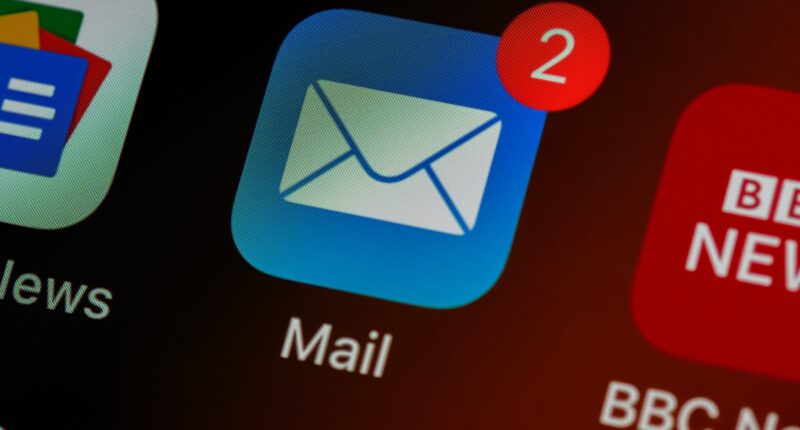Let’s take a look at “Email Marketing: Why You Need an Unsubscribe Strategy” Email marketing is a great way to connect with your customers and keep them updated on your latest offerings. But what do you do when someone unsubscribes from your list?
An unsubscribe strategy helps you manage those who have decided they no longer want to receive your emails. It also allows you to continue to market to them in other ways, such as through social media or direct mail.

In this article, we’ll discuss why you need an unsubscribe strategy and how to create one that works for your business.
Table of Contents
Why you need an unsubscribe strategy
If you’re like most email marketers, you probably put a lot of thought into your subscribe strategy. But what about your unsubscribe strategy?
It might not seem like it’s as important, but having a good unsubscribe strategy is just as important as having a good subscribe strategy. Here’s why:
1. It keeps your list clean.
If someone isn’t interested in your emails anymore, it’s better for them to unsubscribe than to keep getting emails they’re going to ignore. This way, you’re not wasting your time sending emails to people who aren’t going to read them, and you’re not cluttering up your list with inactive subscribers.
2. It shows that you respect your subscribers’ time and attention.
If someone wants to unsubscribe from your emails, it means they don’t want to receive them anymore. Respecting their wishes shows that you understand and value their time and attention.
3. It can actually improve your deliverability.
If someone unsubscribes from your emails, it tells the email providers that they’re not interested in receiving your emails anymore. This can actually help improve your deliverability because the email providers will be more likely to send your emails to people who actually want to receive them.
4. It can help you improve your email marketing.
If someone unsubscribes from your emails, it’s a good opportunity to take a step back and analyze why they didn’t want to receive your emails anymore. Was it because they found your emails irrelevant? Or maybe they found them too frequently?
Whatever the reason, understanding why someone unsubscribed can help you improve your email marketing so that you don’t make the same mistake again.
5. It can save you money.
If you’re paying for each email you send, then having people unsubscribe can actually save you money. Every subscriber who unsubscribes is one less email you have to pay for.
How to create an unsubscribe strategy
An unsubscribe strategy is a plan for what to do when someone unsubscribes from your email list. It should include how you will handle the unsubscribe request, how you will communicate with the person who unsubscribed, and what steps you will take to prevent future unsubscribes.
There are a few different ways to handle an unsubscribe request. One option is to simply remove the person from your email list. Another option is to send a confirmation message to the person who unsubscribed, asking them to confirm that they really want to unsubscribe. Once the person confirms their request, you can then remove them from your list.
You should also have a plan for how you will communicate with the person who unsubscribed. It’s important to be respectful and understanding when reaching out to someone who has chosen to leave your list. You may want to send a personal email or give them a call to thank them for being a part of your email list and to see if there is anything you can do to keep them as a subscriber.
Finally, you should take steps to prevent future unsubscribes. This might include segmenting your list so that people only receive emails that are relevant to them, providing an easy way to unsubscribe from specific types of emails, or offering a preference center where subscribers can choose what kinds of emails they want to receive.
What to include in your unsubscribe strategy
If you’re like most people, you probably hate getting unwanted emails. You might even have a separate email account that you use solely for signing up for things, so you don’t have to deal with the constant barrage of marketing messages.
But if you’re a business owner, email marketing is a necessary evil. It’s one of the most effective ways to reach your customers and promote your products or services. And if you want to be successful, you need to have a strategy for dealing with unsubscribes.
There are a few things you should include in your unsubscribe strategy:
- Make it easy for people to unsubscribe. Include an unsubscribe link in every email you send, and make sure it’s prominently displayed.
- Don’t take it personally. It’s not a reflection on you or your business if someone wants to unsubscribe from your emails. They might be too busy, or they might have changed their interests. Just move on and focus on those who are still interested in hearing from you.
- Offer incentives for staying subscribed. This could be anything from discounts to exclusive content. Let your subscribers know what they’re missing out on if they unsubscribe.
- Don’t spam your subscribers. If you’re constantly sending them emails, they’re going to want to unsubscribe eventually. So make sure you’re only sending them information that’s relevant and interesting.
Email marketing is a necessary part of doing business online. But it’s important to respect your subscribers’ wishes and give them the option to unsubscribe if they want. By following these tips, you can make sure that your unsubscribe rate stays low and your business keeps growing.
How to implement your unsubscribe strategy
If you’re like most email marketers, you probably don’t put a lot of thought into your unsubscribe strategy. After all, why would you want to encourage people to leave your list?
But the fact is, an unsubscribe strategy is just as important as your subscribe strategy. In fact, it might be even more important.
Why? Because if you don’t have a good unsubscribe strategy, people will simply mark your emails as spam. And that’s bad for business. Not only will it damage your reputation, but it could also get you blacklisted by ISPs.
So how do you create a good unsubscribe strategy? Here are a few tips:
1. Make it easy to find the unsubscribe link. The last thing you want is for people to have to search for the unsubscribe link. Make sure it’s prominently displayed in every email.
2. Give people a reason to stay on your list. When someone clicks on the unsubscribe link, take them to a page that thanks them for being a subscriber and offers them a discount or some other incentive to stay on your list.
3. Don’t make people jump through hoops to unsubscribe. The whole point of an unsubscribe link is to make it easy for people to leave your list. So don’t make them fill out a form or answer a bunch of questions. Just let them click the link and be done with it.
4. Keep your unsubscribe page simple. Again, the goal here is to make it as easy as possible for people to unsubscribe. So don’t try to sell them on staying on your list. Just give them the option to unsubscribe and be done with it.
5. Offer an alternative to unsubscribing. If someone really doesn’t want to receive your emails anymore, they’re probably not going to be interested in staying on your list, no matter what you offer them. So give them the option to “unsubscribe” from certain types of emails, such as special offers or newsletters. This way, they can still stay on your list but they won’t be bothered by the emails they’re not interested in.
6. Make sure you honor all unsubscribe requests promptly. Once someone unsubscribes, you should immediately remove them from your list. Don’t wait a few days or weeks. And don’t send them any more emails, even if they haven’t been opened.
7. Send a confirmation email. Once someone unsubscribes, send them a confirmation email to let them know that their request has been processed. This is a good way to build goodwill and keep people from feeling like they’ve been tricked into staying on your list.
8. Keep an eye on your unsubscribe rate. If you see a sudden spike in the number of people unsubscribing from your list, it’s a good sign that something is wrong. It could be that you’re sending too many emails, or that your content is no longer relevant to your subscribers. Either way, it’s something you should look into so you can fix the problem before it gets out of hand.
9. Use an autoresponder service. An autoresponder service can automate the process of managing unsubscribe requests and confirmation emails. This way, you don’t have to worry about it and you can focus on other aspects of your business.
Measuring the success of your unsubscribe strategy
When measuring the success of your unsubscribe strategy, there are a few key metrics you should keep in mind. The first is the overall unsubscribe rate, which is the number of people who have unsubscribed from your email list divided by the total number of people on your list. This number can give you a good idea of how many people are actually finding your emails to be too much or not relevant to their interests.
Another metric to keep track of is the number of complaints you receive about your emails. This can give you an idea of how many people are actually annoyed with the content of your emails and may be more likely to unsubscribe because of it. If you notice a spike in complaints, it may be time to take a look at your email content and see if there’s anything you can change to make it more palatable for your subscribers.
Finally, you should also keep an eye on your open and click-through rates. If you notice that fewer people are opening and clicking through your emails, it could be a sign that they’re losing interest in what you have to say. In this case, it may be time to freshen up your email content or try something new to recapture your subscriber’s attention.
By keeping an eye on these key metrics, you can get a good idea of how your unsubscribe strategy is working and whether or not it’s actually helping to keep people subscribed to your emails.
Conclusion
Email marketing can be a great tool for promoting your business, but it’s important to have an unsubscribe strategy in place. Otherwise, you risk losing subscribers who might not be interested in your content. By giving people the option to unsubscribe from your emails, you show that you’re respectful of their time and preferences. And, if done right, you can even use unsubscribes as an opportunity to learn more about your audience and what they want from your business. So don’t be afraid of a little email housekeeping — it could be just what your business needs to succeed.











